
Roots
The quiet whispers of ancient times carry tales of beauty rituals, practices shaped by the very earth beneath our ancestors’ feet. When we consider what ingredients were commonly used for hair care in these distant eras, we are not simply looking at a list of items; we are peering into a deep connection between humanity and the natural world, a bond forged from necessity and a profound respect for nature’s gifts. These early custodians of hair wellness observed, experimented, and passed down wisdom through generations, understanding that true vitality springs from elemental sources. Their methods, often surprisingly sophisticated, laid the groundwork for much of what we now consider modern hair science, particularly for textured hair, which has always required thoughtful attention and unique approaches to thrive.
Across diverse civilizations, from the sun-drenched lands of Egypt to the vibrant landscapes of ancient India, and the philosophical havens of Greece and Rome, people turned to their immediate environments for hair solutions. These weren’t fleeting trends, but established practices, woven into the fabric of daily life and cultural identity. The ingredients they chose were often those readily available, reflecting the flora and fauna of their regions, yet their application revealed an intuitive understanding of hair’s needs.
Ancient civilizations cultivated a deep connection with nature, drawing upon elemental ingredients for hair care that reflected their unique environments and an intuitive understanding of hair’s vitality.

Elemental Cleansers and Conditioners
At the heart of ancient hair care lay a collection of ingredients used for both cleansing and conditioning. Before the advent of synthetic soaps, people relied on substances with natural saponins, the gentle foaming compounds found in many plants. These natural cleansers worked to purify the scalp and strands without stripping away vital moisture, a balance crucial for all hair types, especially those with inherent dryness or delicate curl patterns.
- Clays ❉ Rhassoul clay, sourced from the Atlas Mountains of Morocco, stands as a prime example. For centuries, North African cultures used this mineral-rich clay for washing hair and skin. When mixed with water, it transforms into a smooth paste that gently exfoliates and binds to impurities, leaving hair clean yet retaining its natural oils. Its root word, “ghassala,” literally means “to wash”. Beyond Rhassoul, other forms of clay and mud were employed across various regions for their cleansing and detoxifying properties.
- Plant Extracts ❉ The Indian subcontinent, a cradle of Ayurvedic wisdom, utilized plants like Amla (Indian Gooseberry), Shikakai (Acacia concinna), and Reetha (Indian soapberry) for centuries. These were often boiled to create herbal pastes or infusions that cleansed the hair while simultaneously nourishing the scalp and promoting overall hair health. Similarly, yucca root was a common cleanser in Native American traditions.
- Oils ❉ Far from just conditioners, oils also played a role in ancient cleansing rituals, often as a pre-wash treatment or to loosen dirt and debris before a water rinse. Olive Oil, a Mediterranean staple, was revered in ancient Greece and Rome for its ability to moisturize, add shine, and even hold styles. Egyptians, too, prized oils like Castor Oil and Almond Oil for conditioning and strengthening hair. These rich oils would protect the hair from harsh environmental elements and serve as a base for infusing other beneficial herbs.
The sophistication of these early methods lies in their simplicity and the profound understanding of how natural elements interacted with the hair’s structure. The focus was not on harsh stripping, but on maintaining equilibrium, a principle that resonates deeply with modern textured hair care philosophies today.

Ancient Hair’s Nourishment and Vitality
Beyond mere cleanliness, ancient civilizations sought to impart strength, shine, and promote hair growth. Their understanding of hair’s vitality led them to a spectrum of nourishing ingredients, often used in conjunction with cleansing rituals.

How Did Ancient Cultures Address Hair Loss and Thinning?
Hair loss and thinning are not new concerns; they have worried individuals for millennia. Ancient cultures developed various remedies, often drawing on local botanicals believed to possess restorative properties. In ancient India, Ayurvedic texts dating back thousands of years described ingredients like Bhringraj, known as the “King of Hair,” for stimulating hair follicles and preventing premature greying. Amla, rich in Vitamin C and antioxidants, was also widely used to strengthen hair and promote growth.
The Egyptians, in their quest for luscious locks, turned to Castor Oil, which was a staple in their hair care routines for its moisturizing and strengthening properties, often mixed with honey and herbs to create masks that promoted growth. The Ebers Papyrus, an ancient Egyptian medical text, even mentions castor oil as promoting hair growth in women. Romans, too, sought solutions, with historical accounts from Pliny the Elder suggesting remedies such as ashes of burnt sheep’s dung mixed with oil of cyprus and honey, or mule hoof ashes with myrtle oil, for hair loss. While some of these practices may seem unconventional to modern sensibilities, they reflect a persistent human desire to preserve and enhance hair.
| Region Ancient Egypt |
| Primary Nourishing Ingredients Castor oil, Almond oil, Honey, Herbs (e.g. Nettle), Beeswax |
| Observed Benefits (Ancient Beliefs) Strengthening, growth, shine, protection, styling |
| Region Ancient Greece & Rome |
| Primary Nourishing Ingredients Olive oil, Honey, Eggs, Milk, Rosemary, Sage, Bay Laurel |
| Observed Benefits (Ancient Beliefs) Softness, shine, moisture, scalp health, color enhancement |
| Region Ancient India (Ayurveda) |
| Primary Nourishing Ingredients Amla, Bhringraj, Fenugreek, Coconut oil, Neem, Hibiscus, Brahmi |
| Observed Benefits (Ancient Beliefs) Growth, anti-greying, scalp health, strength, anti-dandruff |
| Region North Africa |
| Primary Nourishing Ingredients Rhassoul clay, Shea butter, Aloe Vera, Argan oil, Moringa oil |
| Observed Benefits (Ancient Beliefs) Cleansing, conditioning, moisturizing, protection |
| Region East Asia (e.g. China, Japan) |
| Primary Nourishing Ingredients Rice water, Camellia oil, Cedrela plant extracts |
| Observed Benefits (Ancient Beliefs) Shine, strength, cleansing |
The application of these ingredients was often methodical, reflecting a careful approach to hair health. Oils were frequently massaged into the scalp, a practice believed to stimulate circulation and deliver nutrients directly to the hair follicles. Herbal pastes and infusions were left on for extended periods, allowing the beneficial compounds to absorb. These practices underscore a deep respect for the hair as a living extension of the body, deserving of attentive, natural care.

Ritual
Stepping beyond the simple identification of ingredients, we enter the realm of ritual—the rhythmic, intentional application of these natural elements that transformed hair care from a mere task into a profound act of self-connection and cultural expression. This shift from what was used to how it was used provides a deeper lens into ancient beauty practices. These weren’t fleeting applications, but rather structured routines, often steeped in tradition, that nurtured not only the hair but also the spirit of the individual. The wisdom held within these ancient rituals offers practical insights for modern textured hair care, reminding us that consistency and mindful application truly matter.
The hands that blended oils and herbs centuries ago were guided by accumulated knowledge, understanding that the manner of application could significantly impact the outcome. Whether it was a ceremonial anointing or a daily routine, the actions surrounding hair care were often as important as the ingredients themselves, shaping the hair’s appearance and the wearer’s sense of self.
Ancient hair care transcended simple application, evolving into intentional rituals that nurtured both strands and spirit, offering enduring wisdom for modern routines.

The Art of Cleansing Rituals
Ancient cleansing rituals varied widely, reflecting local resources and cultural values, yet shared a common goal ❉ to purify without stripping.
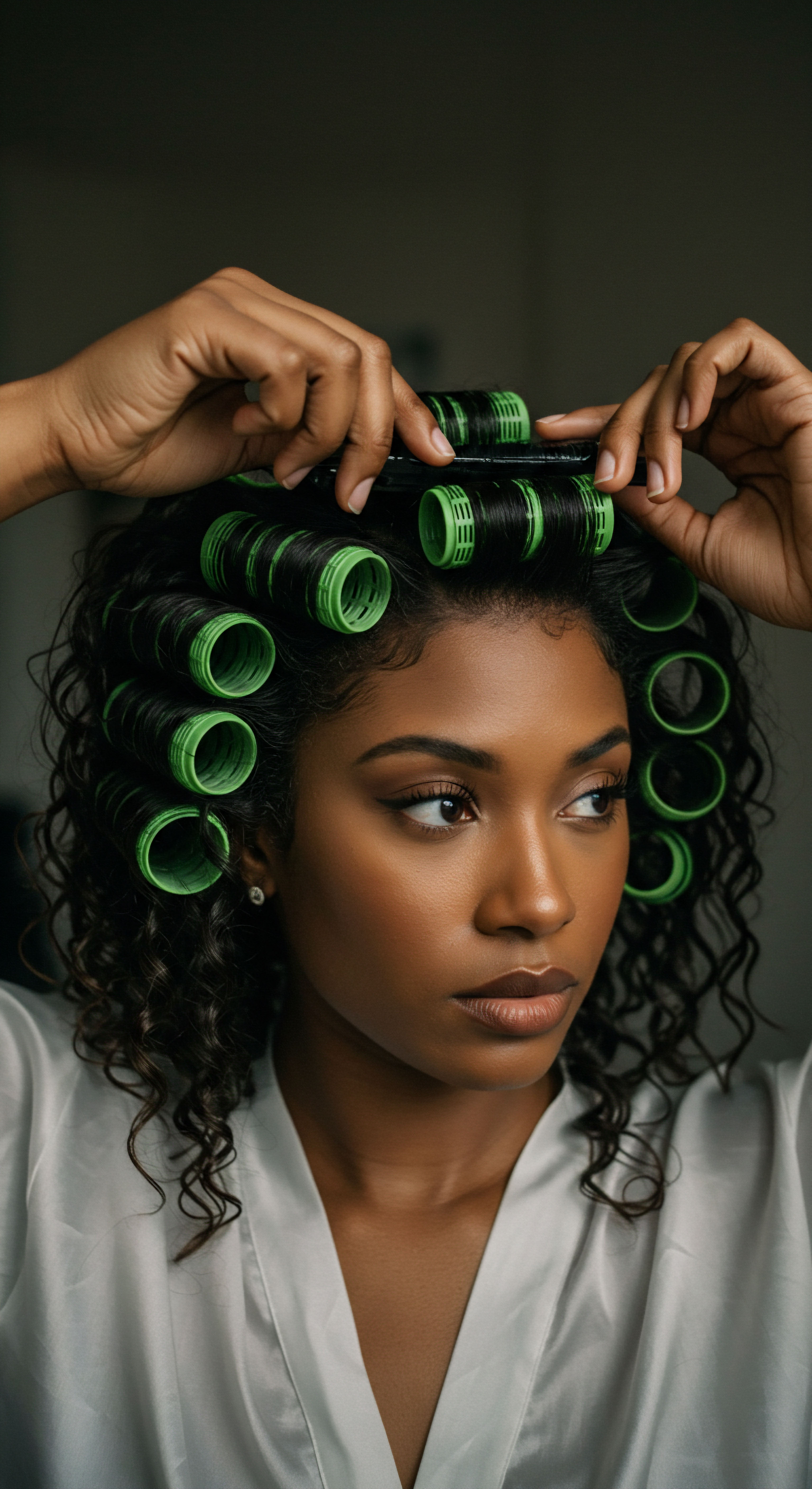
How Did Ancient Cultures Prepare Hair for Cleansing?
Preparation often began with loosening dirt and product buildup, sometimes with the help of oils. In many cultures, particularly those in warmer climates, oils like olive or castor were massaged into the scalp and hair before a wash, allowing them to lift impurities and provide a protective layer against the cleansing agent. This pre-treatment would have been especially beneficial for textured hair, which tends to be drier and more susceptible to moisture loss during washing.
Following this, the cleansing agent, whether a clay paste or a herbal infusion, would be applied. In North Africa, for instance, Rhassoul Clay was mixed with water to form a paste and then massaged into the hair and scalp, left for a short period, and then rinsed thoroughly. This method provided a gentle yet effective cleanse, preserving the hair’s natural moisture balance.
In India, the tradition of ‘champi,’ or head massage, often preceded washing. This ritual, using blends of oils and herbs, stimulated blood circulation to the scalp and nourished hair roots, setting the stage for a thorough yet gentle cleanse. The actual washing involved herbal pastes made from boiled Reetha, Amla, and Shikakai, which were applied to nourish the scalp and condition the hair. These natural cleansers, rich in saponins, would create a mild lather, a far cry from the copious foam of modern shampoos, yet effective in their purpose.
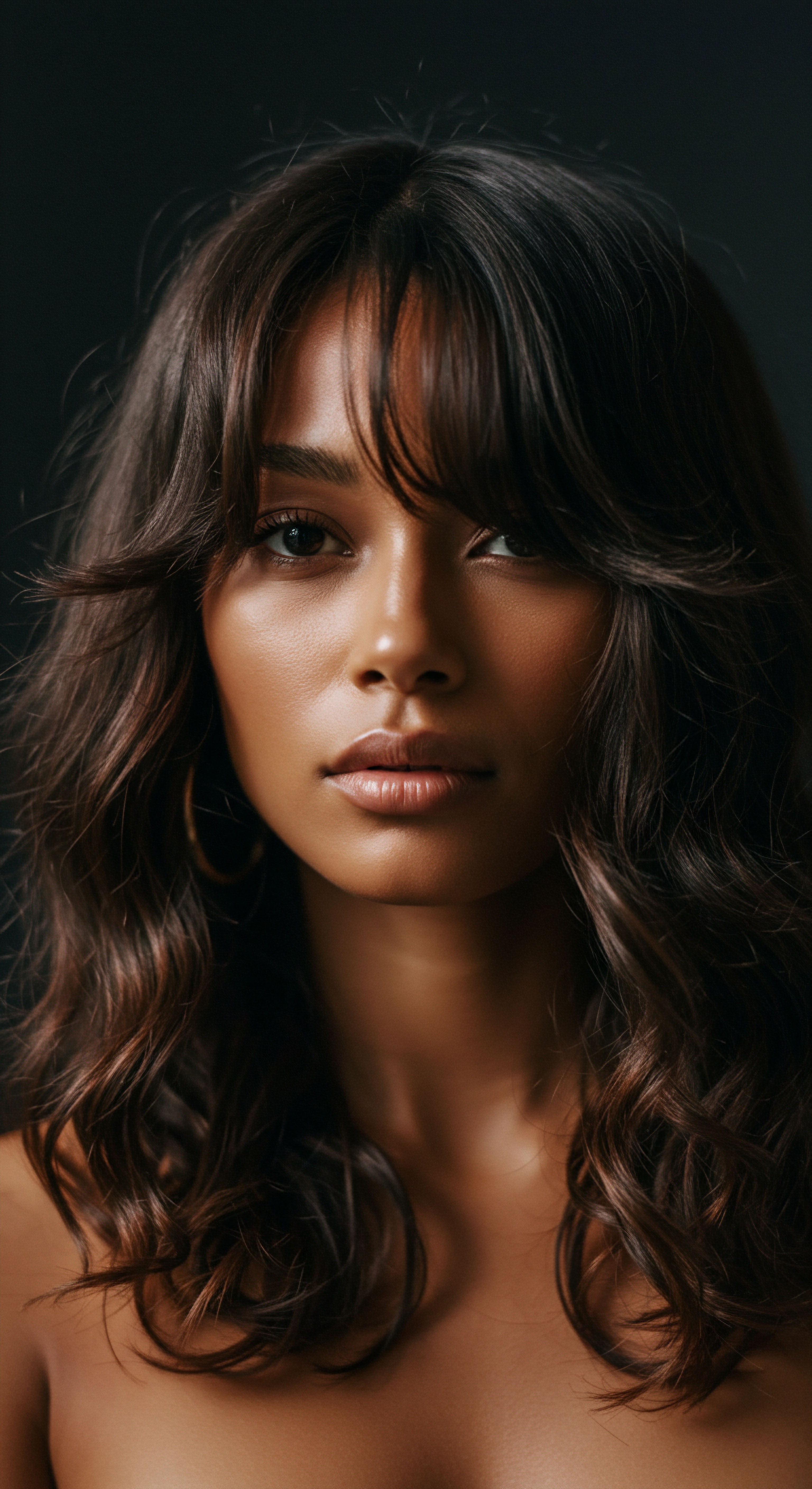
Conditioning and Styling Practices
After cleansing, ancient cultures employed a range of conditioning and styling techniques to maintain hair health and achieve desired aesthetics.

What Were the Primary Methods for Conditioning Ancient Hair?
Oils were paramount in conditioning. Olive Oil in Greece and Rome was not just for cleansing; it was massaged into the scalp and hair to keep it soft, shiny, and prevent frizz. Often, herbs like rosemary and lavender were infused into the oil to enhance its properties. In India, Coconut Oil was a staple in Ayurvedic practices, used as a pre-shampoo treatment to reduce protein loss and minimize damage during washing, also combating dandruff and nourishing the scalp.
Beyond oils, other natural conditioners included:
- Honey ❉ Its emollient and humectant properties made it a natural softener, helping hair retain moisture and promoting scalp health. Egyptians often combined it with castor oil for hair masks.
- Eggs ❉ Rich in protein, eggs were used to strengthen and restore dry, damaged hair, particularly in Greek and Roman beauty regimens.
- Milk ❉ Used by Romans, including wealthy women like Poppaea Sabina who famously bathed in donkey milk, its lactic acid provided exfoliating and softening benefits for skin and likely hair.
- Herbal Rinses ❉ In medieval Europe, infusions of herbs like Rosemary, Nettle, and Chamomile served as final rinses to enhance shine, promote growth, and even add subtle highlights.
For styling, ancient methods were ingenious. Beeswax and ointments were used by Indus Valley civilization inhabitants to hold hair. Egyptians created hair gel from oil palm trees and animal fat. Roman women used heated bronze rods for curling, followed by olive oil serum for shine.
Henna was not only a dye but also a conditioner, adding strength and shine, particularly popular in the Middle East and South Asia. These methods, though rudimentary by today’s standards, were effective in achieving desired looks and maintaining hair integrity.
The purposeful repetition and specific sequences within these ancient rituals speak to a deep understanding of cause and effect. The deliberate warming of oils, the patient infusion of herbs, the careful massage – each step contributed to the overall health and beauty of the hair. These were not quick fixes, but rather a sustained dialogue with the body, honoring its natural rhythms and needs.
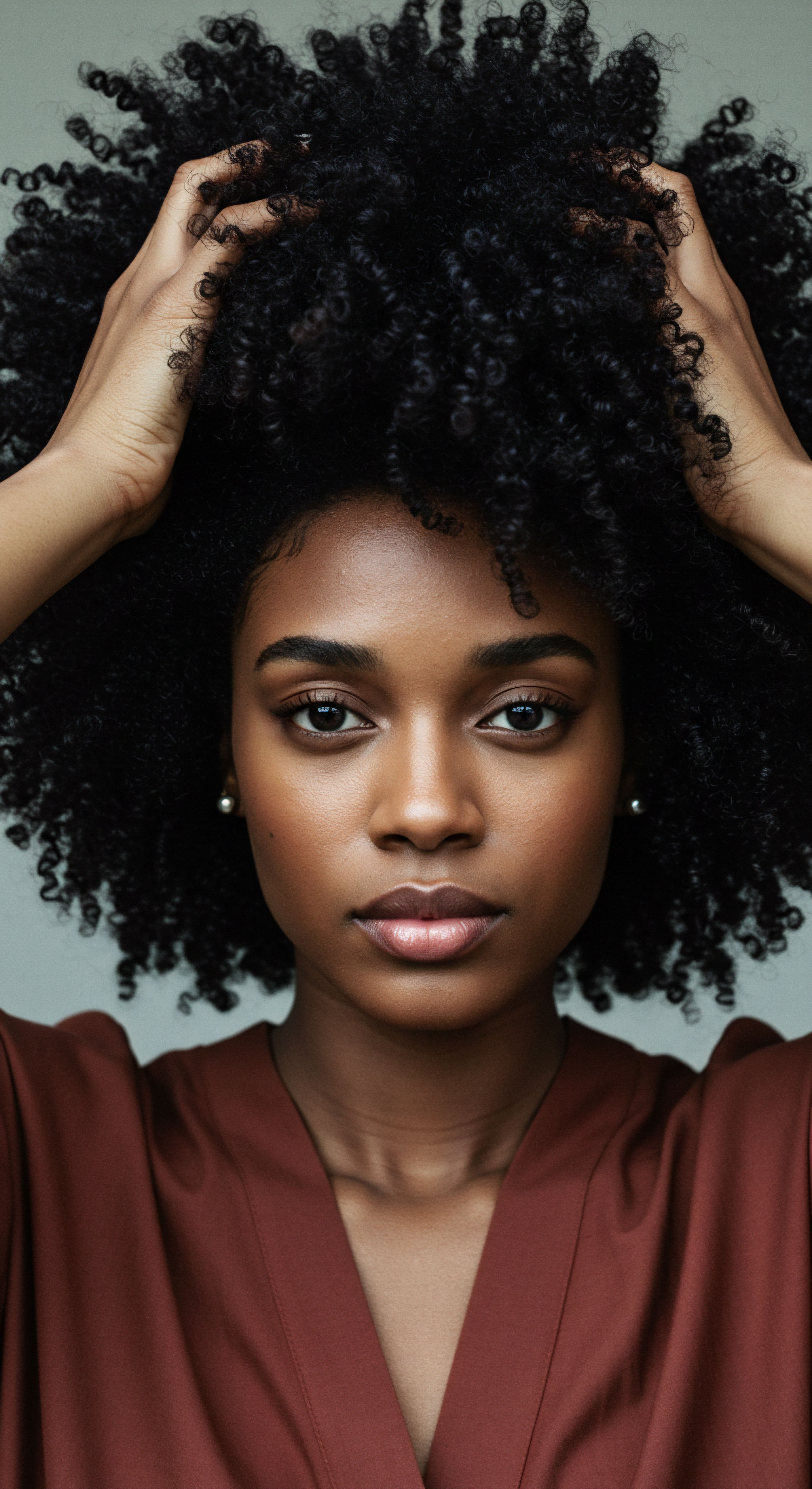
Relay
As we move from the foundational elements and the deliberate practices, we find ourselves at a fascinating intersection where ancient wisdom meets contemporary inquiry. The question of what ingredients were commonly used for ancient hair care broadens here, inviting us to consider the underlying scientific principles and the profound cultural significance that shaped these practices. This exploration moves beyond simple lists, prompting a deeper understanding of how these historical methods, seemingly distant, continue to resonate with our modern understanding of hair health, especially for textured hair. The interplay of environmental adaptation, intuitive botanical knowledge, and social meaning creates a rich tapestry of human ingenuity.
It is in this space that we can appreciate the foresight of our ancestors, whose practical applications often predated formal scientific validation. Their observations, refined over centuries, reveal a sophisticated, albeit unwritten, chemistry. The persistence of certain ingredients and rituals across millennia is not merely anecdotal; it speaks to an efficacy that modern research is now beginning to unravel and confirm.
Ancient hair care practices, far from being mere anecdotes, display a sophisticated, intuitive chemistry, with modern research increasingly affirming their efficacy and cultural significance.

The Biochemical Resonance of Ancient Botanicals
Many ingredients favored by ancient cultures possess biochemical compounds that modern science now recognizes for their beneficial effects on hair. The effectiveness of these traditional remedies was often understood through observation, passed down as ancestral knowledge. Today, we can identify the specific mechanisms at play.

How Does Modern Science Validate Ancient Hair Practices?
Consider the widespread use of certain plants. Fenugreek (Trigonella foenum-graecum), for instance, has a long history in Ayurvedic and other traditional medicine systems for its purported hair growth properties. Modern research, though still needing broader human studies, provides intriguing support for these ancient claims. Fenugreek seeds are rich in proteins, vitamins, and folic acid, all essential for hair health.
More significantly, they contain natural saponins, which may act as DHT inhibitors. Dihydrotestosterone (DHT) is a hormone linked to hair loss, particularly in androgenetic alopecia. By potentially inhibiting DHT from attaching to hair follicles, fenugreek offers a mechanism that aligns with its traditional use for hair growth and combating hair loss.
One study, a six-month randomized, placebo-controlled clinical trial, involved 60 men and women experiencing low to moderate hair loss. Participants taking fenugreek supplements reported noticeable improvements in hair fullness and reduced shedding. Researchers suggested that fenugreek may increase blood supply to hair follicles, a crucial aspect of hair vitality.
While more extensive research is always welcome, this points to a scientific basis for a practice rooted in deep antiquity. The continuity of such knowledge, passed down through generations, highlights a profound, albeit informal, empirical method at play.
Beyond fenugreek, other ancient ingredients also stand up to scientific scrutiny:
- Aloe Vera ❉ Widely used across African, Egyptian, and Greek traditions, aloe vera is known for its soothing and moisturizing properties. Its gel contains enzymes that can break down dead skin cells on the scalp, along with vitamins and minerals that nourish hair.
- Coconut Oil ❉ A staple in Ayurvedic practices, coconut oil is unique due to its high lauric acid content. This fatty acid has a small molecular structure, allowing it to penetrate the hair shaft, reducing protein loss and providing deep conditioning, a benefit now supported by contemporary research.
- Rhassoul Clay ❉ Its high concentration of minerals like magnesium, potassium, and silica contributes to its cleansing and conditioning properties. The clay’s negatively charged particles effectively draw out impurities without stripping natural oils, making it a gentle yet effective cleanser.
These examples demonstrate a powerful relay of knowledge, where ancient observation laid the groundwork for modern scientific investigation, affirming the efficacy of these timeless remedies.
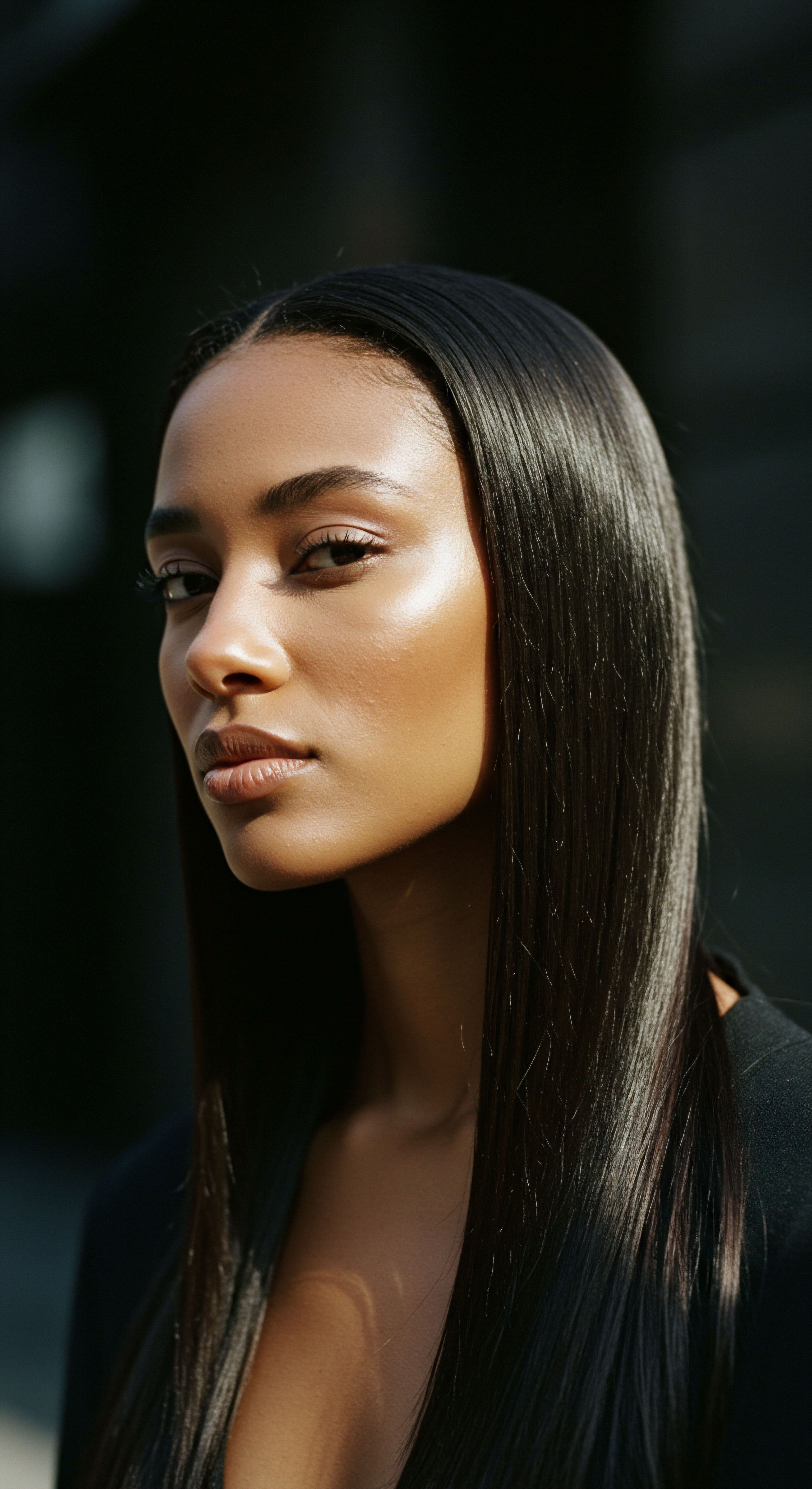
Cultural Significance and Hair Identity
Hair in ancient societies was far more than a physical attribute; it was a powerful marker of identity, status, and spiritual connection. The ingredients used and the rituals performed were deeply intertwined with cultural beliefs and social structures.
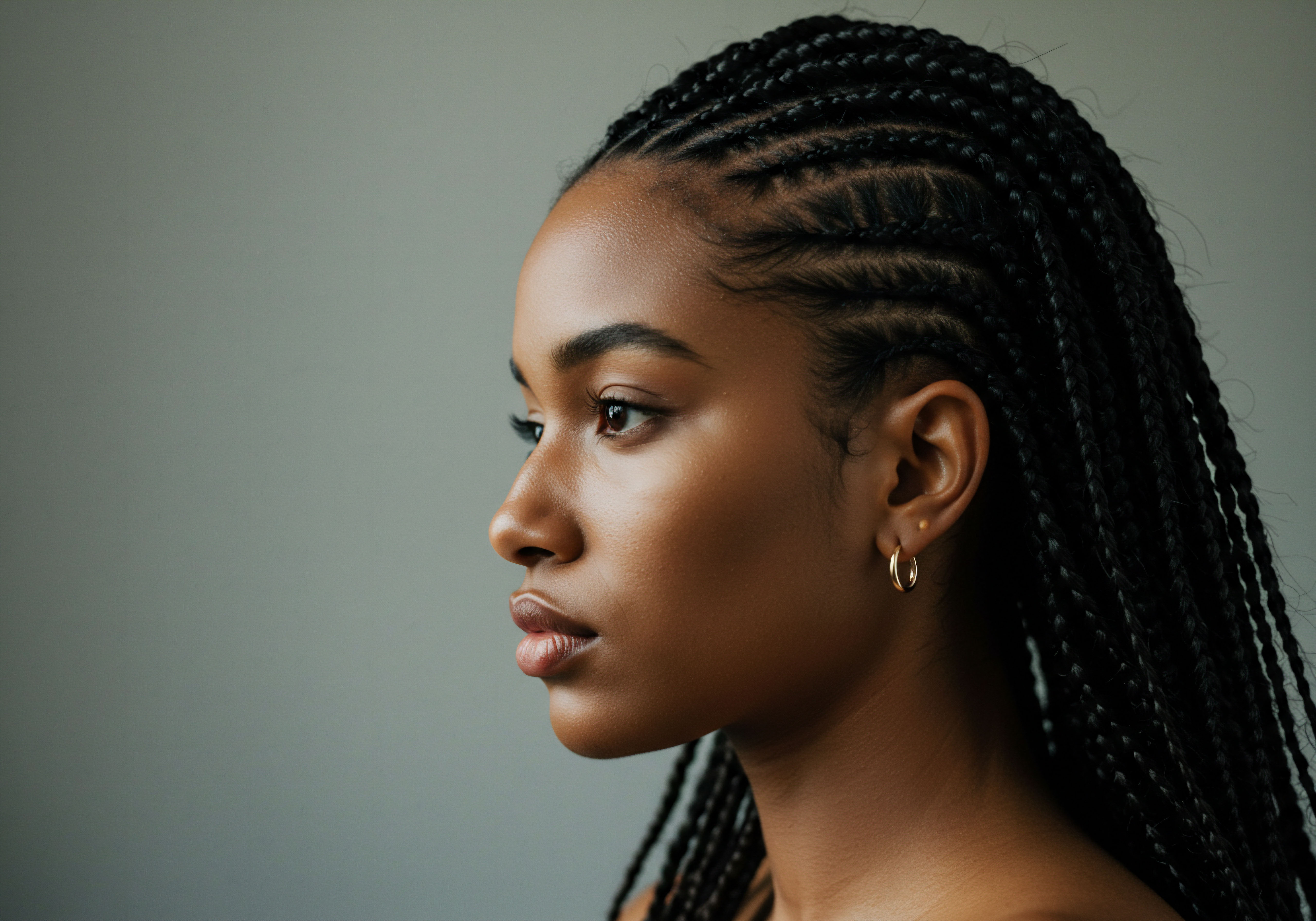
How Did Ancient Hair Practices Reflect Social Status and Beliefs?
In ancient Egypt, hair care was a reflection of health, beauty, and status. Wigs, often elaborate and perfumed, were common, and their care involved natural oils and beeswax. Henna was used for coloring and strengthening, but also held significant cultural and spiritual meaning, symbolizing joy and vitality, and often applied during celebrations. The choice of hair style and the ingredients used could signify one’s place within the social hierarchy.
Roman society, too, saw hair as a statement. While Roman women favored pale skin, hair color could be manipulated. Blonde or red hair was highly desirable, achieved through bleaching agents like goat fat and beechwood ash, or saffron dyes.
Conversely, jet-black hair could be achieved with concoctions like fermented leeches in red wine – a testament to the lengths people would go for aesthetic ideals, even when involving unsettling ingredients. The extensive time and resources invested in grooming, often involving specialized hairdressers (ornatrices), underscored the importance of appearance in Roman social life.
In many African traditions, hair is a sacred element, embodying heritage and strength. Ingredients like Shea Butter, Aloe Vera, Marula Oil, and Baobab Oil were not only for physical nourishment but also held symbolic weight, passed down through generations as beauty secrets. Chebe powder, a traditional hair care remedy from Chad, consisting of natural herbs and seeds, is used to strengthen hair and promote length, often within communal rituals that solidify cultural bonds. The concept of hair oiling in South Asia, stemming from Ayurveda, was not solely about hair health but also a ritual of bonding between mothers and daughters, a moment of shared self-care and generational connection.
This deeper lens reveals that ancient hair care was a sophisticated system, a blend of empirical knowledge, cultural symbolism, and personal expression. The ingredients chosen were not random, but deeply embedded in the natural world and the human spirit, offering a profound understanding that resonates with Roothea’s dedication to textured hair and its heritage.

Reflection
To consider the ingredients commonly used for ancient hair care is to gaze into a mirror reflecting our own persistent desires for healthy, vibrant strands. The journey through historical practices, from the elemental clays and nourishing oils to the potent botanicals, reveals a timeless pursuit. Our ancestors, without the aid of modern laboratories, possessed an intuitive grasp of nature’s offerings, meticulously observing, testing, and passing down wisdom that continues to inform our understanding today.
The resilience of these practices, enduring through centuries and across continents, speaks volumes about their efficacy and the profound connection between human well-being and the earth’s bounty. This exploration invites us to pause, to appreciate the heritage woven into every strand, and to recognize that the very roots of our hair care traditions are deeply intertwined with the ancient world’s quiet wisdom.

References
- Ahmed, S. & Sharma, A. (2018). The Ayurvedic approach to hair care ❉ A review of traditional herbs and their scientific validation. Journal of Herbal Medicine, 12(3), 101-109.
- Al-Rawi, F. A. (2009). Hair Care in Ancient Mesopotamia. Iraq, 71, 107-118.
- Bar-Yosef, O. & Van Andel, T. H. (2008). The history of human use of plants for health and beauty. In The Oxford Handbook of the Archaeology of the Levant (pp. 69-80). Oxford University Press.
- Draelos, Z. D. (2010). Hair cosmetics ❉ An overview. Journal of Cosmetic Dermatology, 9(2), 156-160.
- Ebers Papyrus. (c. 1550 BCE). Ancient Egyptian Medical Text. (Various modern translations available).
- Ghasemi, M. & Khoshkhou, Z. (2017). Phytochemical and Pharmacological Properties of Fenugreek (Trigonella foenum-graecum L.). Journal of Pharmacopuncture, 20(3), 168-176.
- Kumar, V. et al. (2012). Herbal plants in hair care ❉ A review. International Journal of Pharmaceutical Sciences Review and Research, 13(1), 122-128.
- Pazyar, N. Yaghoobi, R. Rafiee, E. & Kazerouni, A. (2013). Herbal Medicine for Hair Loss. Journal of Skin and Stem Cell, 1(2), e11929.
- Pliny the Elder. (c. 77-79 CE). Naturalis Historia (Natural History). (Various modern translations available).
- Regev, E. (2017). Hair in Ancient Israel ❉ A Study of Social and Religious Meaning. Journal of Biblical Literature, 136(3), 461-478.
- Salloum, K. (2007). The Food and Drink of the Pharaohs. American University in Cairo Press.
- Siddiqui, S. & Ahmad, I. (2015). A Review on Hair Care Herbs in Traditional System of Medicine. International Journal of Herbal Medicine, 3(4), 1-5.
- Tobin, D. J. (Ed.). (2005). Hair in toxicology ❉ an important bio-monitor (Vol. 1). Royal Society of Chemistry.
- Vossen, P. (2007). Olive oil ❉ history, production, and characteristics of the world’s classic oils. HortScience, 42(5), 1093-1100.
- Wilner, O. (1931). The Roman Hairdresser. The Classical Journal, 26(9), 653-662.